Abstract: Using a shunt reference and op amp, a low-power, low-voltage series reference can be designed. The circuit consumes very low power (2.4μA) and offers excellent line regulation (90dB) and load regulation (0.1V/A). This circuit provides excellent performance compared to many series references currently available.
The average voltage reference draws around 440μA of quiescent current. By combining two small ICs and a few external resistors, designers can cut that voltage-reference current consumption to a paltry 2.4μA, thus vastly reducing energy use. The circuit presented here is appropriate for most reference needs, such as in data conversion circuits and digital voltmeters. It is especially well suited for battery-operated handheld instruments like PDAs and inventory control units where long battery life is a primary design goal.
This ultra-low-power reference circuit combines a shunt reference and an op amp. The low-voltage shunt reference has been available since the birth of the bandgap cell. It typically uses less current than a series reference, but offers inferior line and load regulation when compared to the more power-hungry series reference. Consider now, the op amp needed to apply the current. Careful design has produced modern op amps with very low current draw. Combining the low power consumption of a shunt reference with a modern ultra-low-power op amp yields a very low-power voltage reference with high-current sink/source capability and excellent line and load regulation (Figure 1).
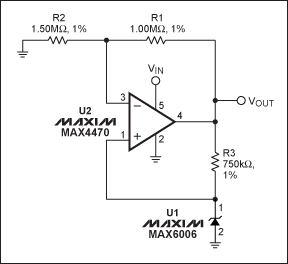
Figure 1. The shunt reference (U1) in this ultra-low-power reference circuit yields a composite circuit with the low-power use advantage of shunt references and the superior line and load regulation of series references. These performance benefits come at a fraction of the power use of the typical series reference.
The heart of this circuit is the MAX6006, a 1μA, +1.25V shunt reference. Bias current for this shunt reference comes directly from the amplified reference voltage, virtually eliminating line-regulation error. Because the MAX4470 op amp supplies the load current, load regulation is much better than that of resistively biased bandgap references.
Total supply current for the circuit shown is 2.4μA, which includes the current in the feedback network. The network shown sets the output to +2.0V, but is easily adjusted for other voltages.
The circuit sinks and sources current quite well. Line regulation is 90dB from VIN = 2.2V to 5.5V, and load regulation (with VIN = 2.5V) is 1μV per 10μA of output current. The total supply current is 2.4μA, independent of the supply voltage. This performance well exceeds that of series references currently available, whose minimum supply currents are 5μA and above.
The average voltage reference draws around 440μA of quiescent current. By combining two small ICs and a few external resistors, designers can cut that voltage-reference current consumption to a paltry 2.4μA, thus vastly reducing energy use. The circuit presented here is appropriate for most reference needs, such as in data conversion circuits and digital voltmeters. It is especially well suited for battery-operated handheld instruments like PDAs and inventory control units where long battery life is a primary design goal.
This ultra-low-power reference circuit combines a shunt reference and an op amp. The low-voltage shunt reference has been available since the birth of the bandgap cell. It typically uses less current than a series reference, but offers inferior line and load regulation when compared to the more power-hungry series reference. Consider now, the op amp needed to apply the current. Careful design has produced modern op amps with very low current draw. Combining the low power consumption of a shunt reference with a modern ultra-low-power op amp yields a very low-power voltage reference with high-current sink/source capability and excellent line and load regulation (Figure 1).

Figure 1. The shunt reference (U1) in this ultra-low-power reference circuit yields a composite circuit with the low-power use advantage of shunt references and the superior line and load regulation of series references. These performance benefits come at a fraction of the power use of the typical series reference.
The heart of this circuit is the MAX6006, a 1μA, +1.25V shunt reference. Bias current for this shunt reference comes directly from the amplified reference voltage, virtually eliminating line-regulation error. Because the MAX4470 op amp supplies the load current, load regulation is much better than that of resistively biased bandgap references.
Total supply current for the circuit shown is 2.4μA, which includes the current in the feedback network. The network shown sets the output to +2.0V, but is easily adjusted for other voltages.
The circuit sinks and sources current quite well. Line regulation is 90dB from VIN = 2.2V to 5.5V, and load regulation (with VIN = 2.5V) is 1μV per 10μA of output current. The total supply current is 2.4μA, independent of the supply voltage. This performance well exceeds that of series references currently available, whose minimum supply currents are 5μA and above.
 電子發(fā)燒友App
電子發(fā)燒友App










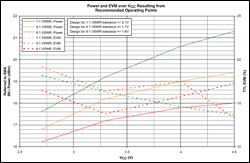
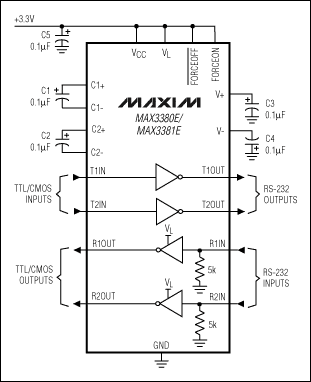
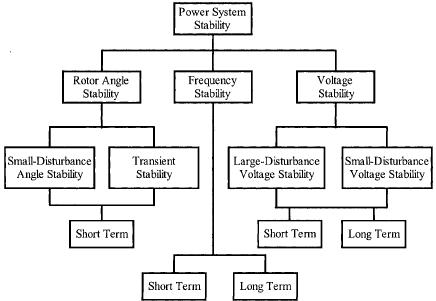
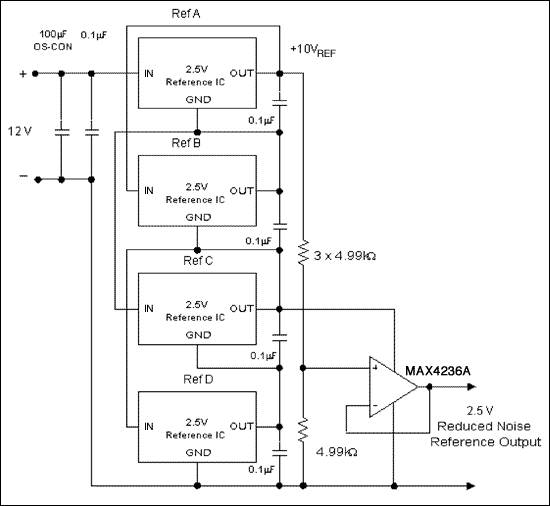
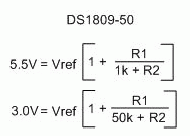

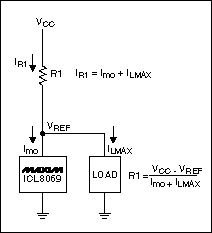
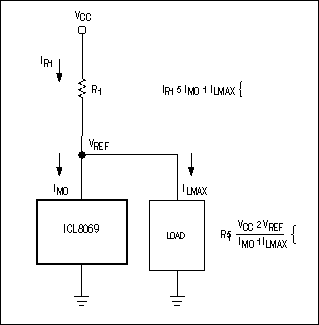
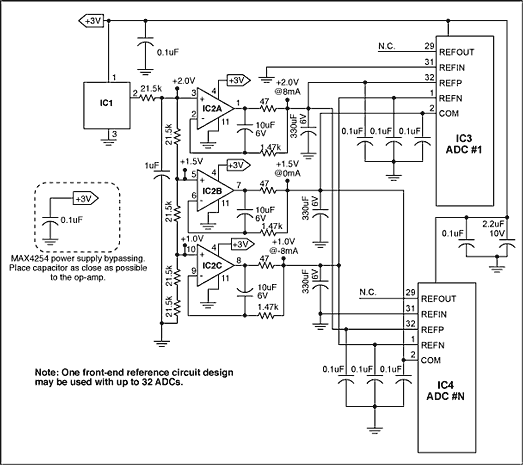
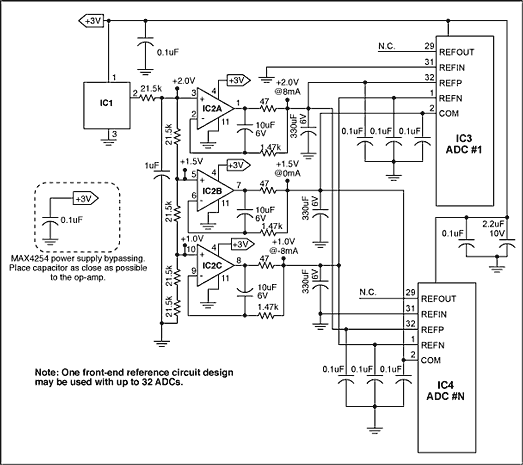
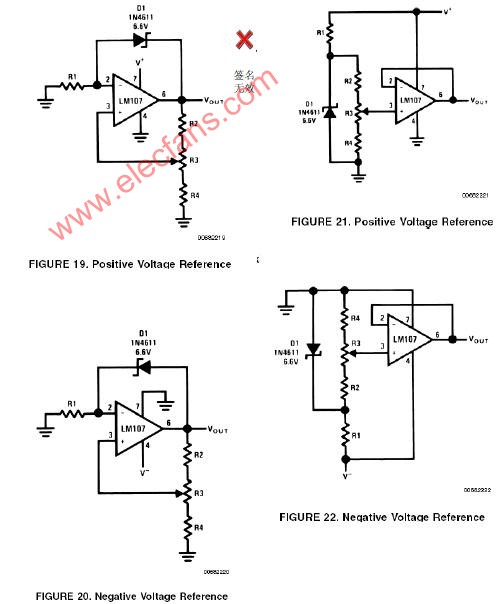
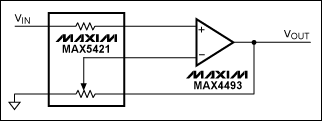













評論